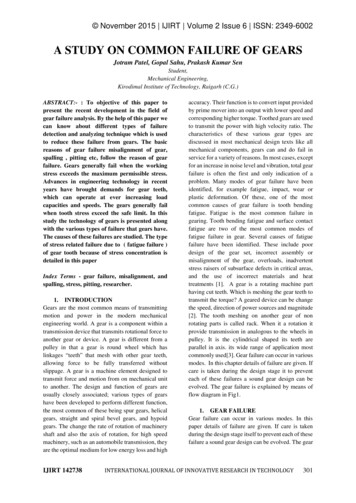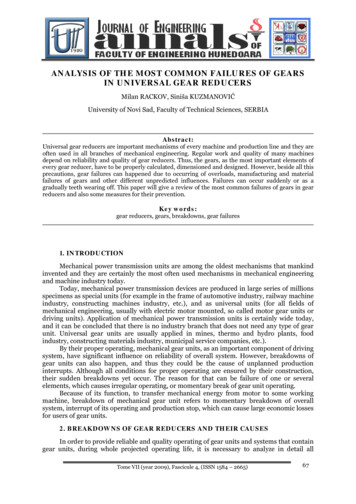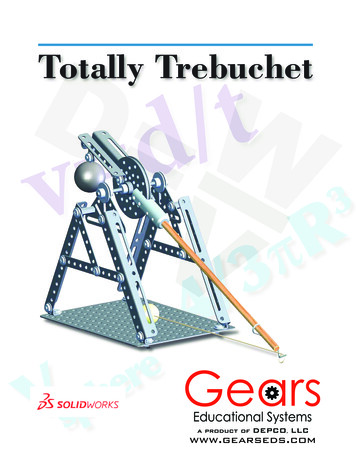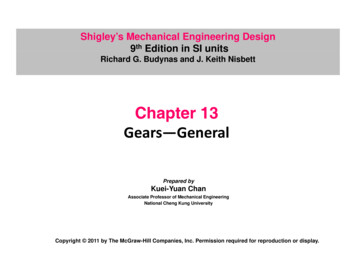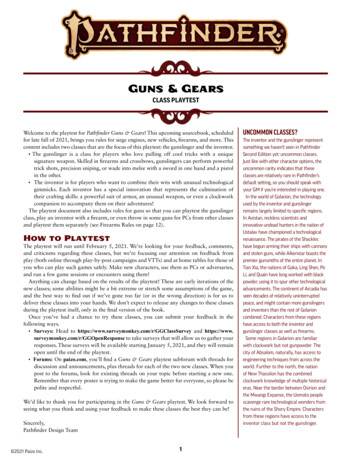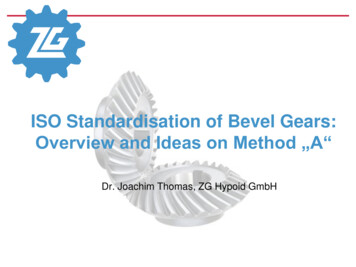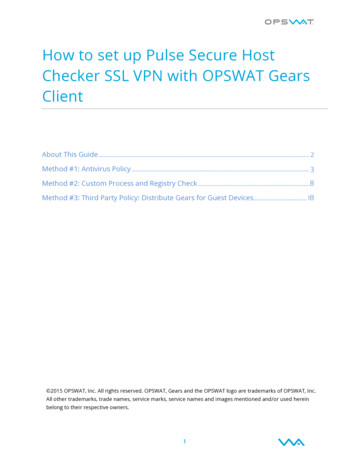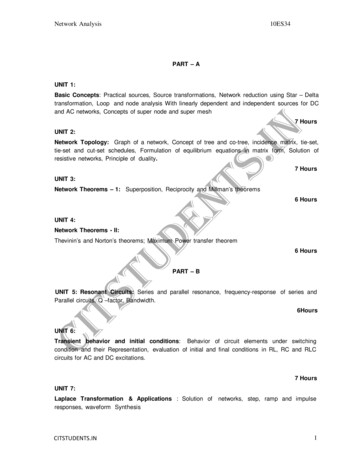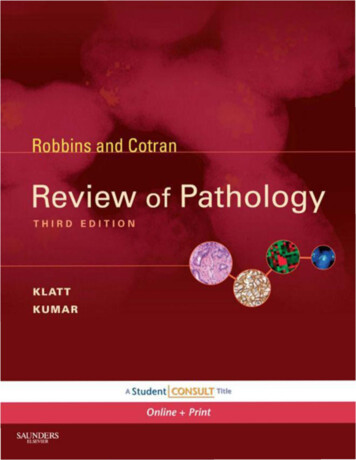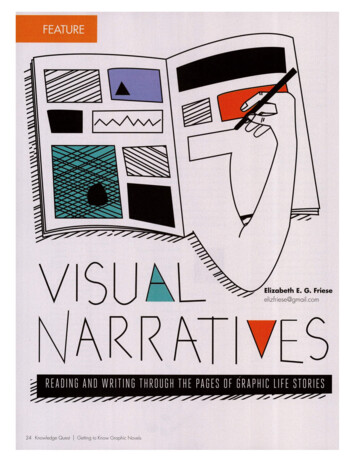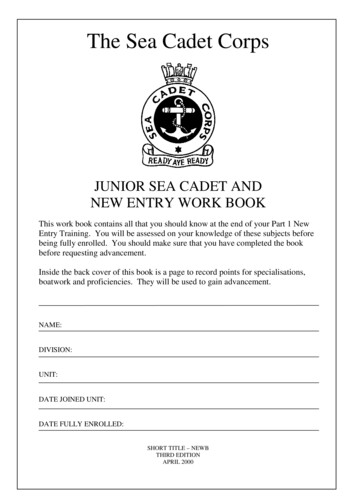
Transcription
Gears.notebookAugust 31, 2015GearsWhat are gears?Where do we findgears?1
Gears.notebookAugust 31, 2015Gears- Gears are wheels with teeth- Gears have interlocking teeth that connectwith and move each other.- It helps transfer movement in objects.- When the gears interlock with each other, onegear will cause another to move- The size and movement direction of the gearsdepends on the number of teeth it has comparedto the othersGears increase ordecrease the poweror speedGears can be found in everything from cars toclocks. Get your parents' approval beforechecking the listed items in your house to seewhether or not they use gears- Clock- Can opener- DVD player2
Gears.notebookAugust 31, 2015Driver Gear vs.Driven GearDriver Gear: the INPUT gear, or driver gear,is where the force is first appliedDriven Gear: the final gear on the gear trainto which the force is first appliedIdler Gear: any gear in between the driver anddriven gears.This diagram shows five meshedgears. The arrows show thedirection the gears are turning.Gears will either turn clockwise orcounterclockwise.3
Gears.notebookAugust 31, 2015Important Featuresof GearsRotation clockwise orcounterclockwiseNumber of teethWhere it is placed in the gear trainSize of the gear4
Gears.notebookAugust 31, 2015Different Types ofGearsSpur GearsIn spur gears, the teeth meet on a flat surface andcan change the speed and direction of motionSpur gears move opposite of each other becausethey are meshed together.In the picture below, gear 'A' is called the driver.As gear 'A' turns it meshes with gear 'B' and itbegins to turn as well. Gear 'B' is the driven gear.Examples: washingmachine, clothes dryer5
Gears.notebookAugust 31, 2015Rack and PinionA single gear, a PINION, meshes with a sliding toothedrack.Examples: Rear wheel of a bicycle Windshield wipers in cars A clock pendulum The wheel of a wheelbarrowRack and Pinion Gears: In rack and pinion gears, a single gear, called the pinion, meets with atoothed rack. The rack may slide or stay in one place. The system changes circular motioninto motion in a straight line6
Gears.notebookAugust 31, 2015Bevel GearsIn bevel gears, two gears connect at an angle.Bevel gears are often cone-shaped. They canalso change the speed and direction of motion.Examples of bevel gears can be found in handdrills and small bevel gears are found in DVDplayers7
Gears.notebookAugust 31, 2015Worm GearsIn worm gears, a axle or shaft has a screw thread that connectswith another gear. This system is used to reduce the speed andchange the direction of motion.Worm gears are often found in elevators andescalatorsWorm drive controlling agate8
Gears.notebookAugust 31, 2015How gears changeforce, speed anddirection using gearsystemsInput vs. output componentIn order for a gear to work, something has to make them turn.The place where the energy is put into the system is called the INPUT.On a bicycle, the pedal is the input.You push on the pedal to make the pedal gear in the system turn. As you push, the gearmoves the chain.The last thing to move on the system is called the OUTPUT. The back wheel is the output ofthe system.9
Gears.notebookAugust 31, 2015BICYCLEWhat do you do with the pedals?What happens when you push onthe pedals?What other parts of the bike areput into motion?10
- Gears are wheels with teeth - Gears have interlocking teeth that connect with and move each other. - It helps transfer movement in objects. - When the gears interlock with each other, one gear will cause another to move - The size and movement direction of the gears depends on the numbe
